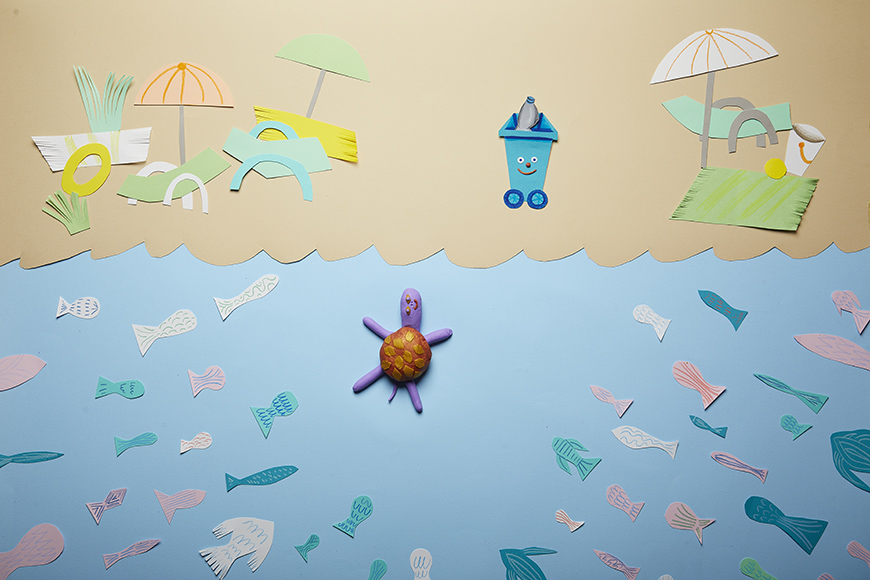
A new line of extra soft modeling dough in CUBE, Made in Italy produced in the respect for the environment, for children who want to grow up both creative and aware: four cute cubes, four different creative ideas, and four suggestions for a more sustainable world.
Sea turtles are fascinating creatures that inhabit our oceans. Although they are often featured in movies or cartoons, there are many interesting facts to discover about these wonderful and ancient animals. Sometimes jellyfish-eating turtles seeing plastic waste in the sea believe it is food and eat it, putting their survival at risk. Learn about, love and protect sea turtles with PRIMO.
Here are some fun facts you might not know about sea turtles:
1. In the Mediterranean, the most common species is the common sea turtle (Caretta caretta), but other species such as the green turtle (Chelonia mydas) and, although rarer, the loggerhead turtle (Dermochelys coriacea) are also present. In total, there are seven species of sea turtles distributed in the tropical and temperate belt of the world's seas. Unfortunately, all of these species are at risk of extinction due to various threats including pollution of the seas.
2. Turtles are among the longest-lived animals on the planet: water turtles can live over 30 years, but Mediterranean land turtles can live over 80 years. Giant land turtles, on the other hand, can live over 180 years!
3. The shell of sea turtles looks strong, but it is also extremely delicate and important for their survival: it is composed of bone elements, but also contains organs and the skeleton of the legs. It is a very sensitive structure, with nerve endings that allow turtles to sense touch. Therefore, it is important to treat turtles very gently so as not to harm them.
4. Sea turtles have magnetic orientation: they are able to detect the earth's magnetic field and use it as a kind of compass. Thanks to this ability, even if they live in different seas, they are able to return to the beach where they were born, even after many years.
5. One of the most dangerous threats to sea turtles is plastic: Some species, such as leatherback and hawksbill turtles, feed mainly on jellyfish. Unfortunately, when they see plastic waste floating in the sea, they may mistake it for jellyfish and accidentally ingest it. This can go so far as to kill them, as plastic cannot be digested and can cause internal damage.
Discover the wonderful world of sea turtles and become aware of the importance of protecting these amazing creatures. With small gestures, we can help preserve sea turtles and their delicate habitats.
Build a better world, not just with Easydó!